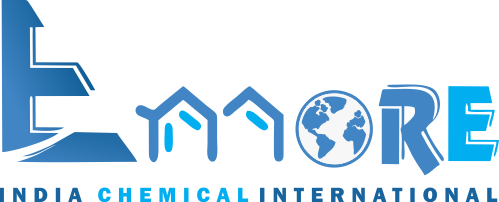Waxes |supplier Distributor Manufacturer in chennai Taminadu india
Waxes are a diverse class of organic compounds that are lipophilic, malleable solids near ambient temperatures. They include higher alkanes and lipids, typically with melting points above about 40 °C (104 °F), melting to give low viscosity liquids. Waxes are insoluble in water but soluble in organic, nonpolar solvents. Natural waxes of different types are produced by plants and animals and occur in petroleum.
Uses
Waxes are mainly consumed industrially as components of complex formulations, often for coatings. The main use of polyethylene and polypropylene waxes is in the formulation of colourants for plastics. Waxes confer matting effects and wear resistance to paints. Polyethylene waxes are incorporated into inks in the form of dispersions to decrease friction. They are employed as release agents, find use as slip agents in furniture, and confer corrosion resistance.
Candles
Wax candle.
Waxes such as paraffin wax or beeswax, and hard fats such as tallow are used to make candles, used for lighting and decoration.
Wax products
Waxes are used as finishes and coatings for wood products.Beeswax is frequently used as a lubricant on drawer slides where wood to wood contact occurs.
Sealing wax was used to close important documents in the Middle Ages. Wax tablets were used as writing surfaces. There were different types of wax in the Middle Ages, namely four kinds of wax (Ragusan, Montenegro, Byzantine, and Bulgarian), "ordinary" waxes from Spain, Poland, and Riga, unrefined waxes and colored waxes (red, white, and green). Waxes are used to make wax paper, impregnating and coating paper and card to waterproof it or make it resistant to staining, or to modify its surface properties. Waxes are also used in shoe polishes, wood polishes, and automotive polishes, as mold release agents in mold making, as a coating for many cheeses, and to waterproof leather and fabric. Wax has been used since antiquity as a temporary, removable model in lost-wax casting of gold, silver and other materials.
Wax with colorful pigments added has been used as a medium in encaustic painting, and is used today in the manufacture of crayons, china markers and colored pencils. Carbon paper, used for making duplicate typewritten documents was coated with carbon black suspended in wax, typically montan wax, but has largely been superseded by photocopiers and computer printers. In another context, lipstick and mascara are blends of various fats and waxes colored with pigments, and both beeswax and lanolin are used in other cosmetics. Ski wax is used in skiing and snowboarding. Also, the sports of surfing and skateboarding often use wax to enhance the performance.
Some waxes are considered food-safe and are used to coat wooden cutting boards and other items that come into contact with food. Beeswax or coloured synthetic wax is used to decorate Easter eggs in Romania, Ukraine, Poland, Lithuania and the Czech Republic. Paraffin wax is used in making chocolate covered sweets.
Wax is also used in wax bullets, which are used as simulation aids.
Specific examples
Animal waxes
Beeswax - produced by honey bees
Chinese wax - produced by the scale insect Ceroplastes ceriferus
Lanolin (wool wax) - from the sebaceous glands of sheep
Shellac wax - from the lac insect Kerria lacca
Spermaceti - from the head cavities and blubber of the sperm whale
Vegetable waxes
Bayberry wax - from the surface wax of the fruits of the bayberry shrub, Myrica faya
Candelilla wax - from the Mexican shrubs Euphorbia cerifera and Euphorbia antisyphilitica
Carnauba wax - from the leaves of the Carnauba palm, Copernicia cerifera
Castor wax - catalytically hydrogenated castor oil
Esparto wax - a byproduct of making paper from esparto grass,
(Macrochloa tenacissima)
Japan wax - a vegetable triglyceride (not a true wax), from the berries
of Rhus and Toxicodendron species
Ouricury wax - from the Brazilian feather palm, Syagrus coronata.
Rice bran wax - obtained from rice bran (Oryza sativa)
Soy wax - from soybean oil
Tallow Tree wax - from the seeds of the tallow tree Triadica sebifera.
Mineral waxes
Ceresin waxes
Montan wax - extracted from lignite and brown coal
Ozocerite - found in lignite beds
Peat waxes
Petroleum waxes
Paraffin wax - made of long-chain alkane hydrocarbons
Microcrystalline wax - with very fine crystalline structure
